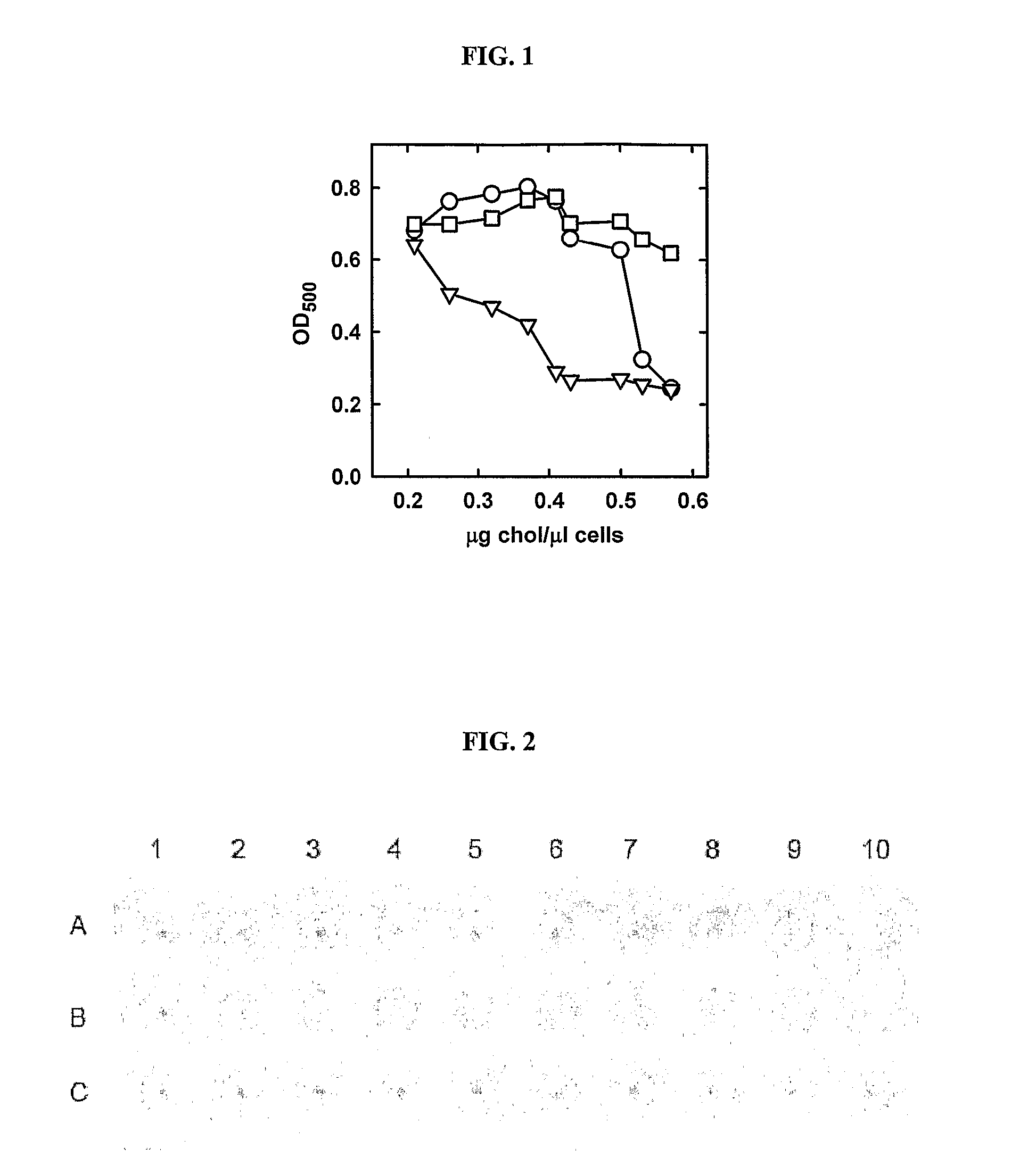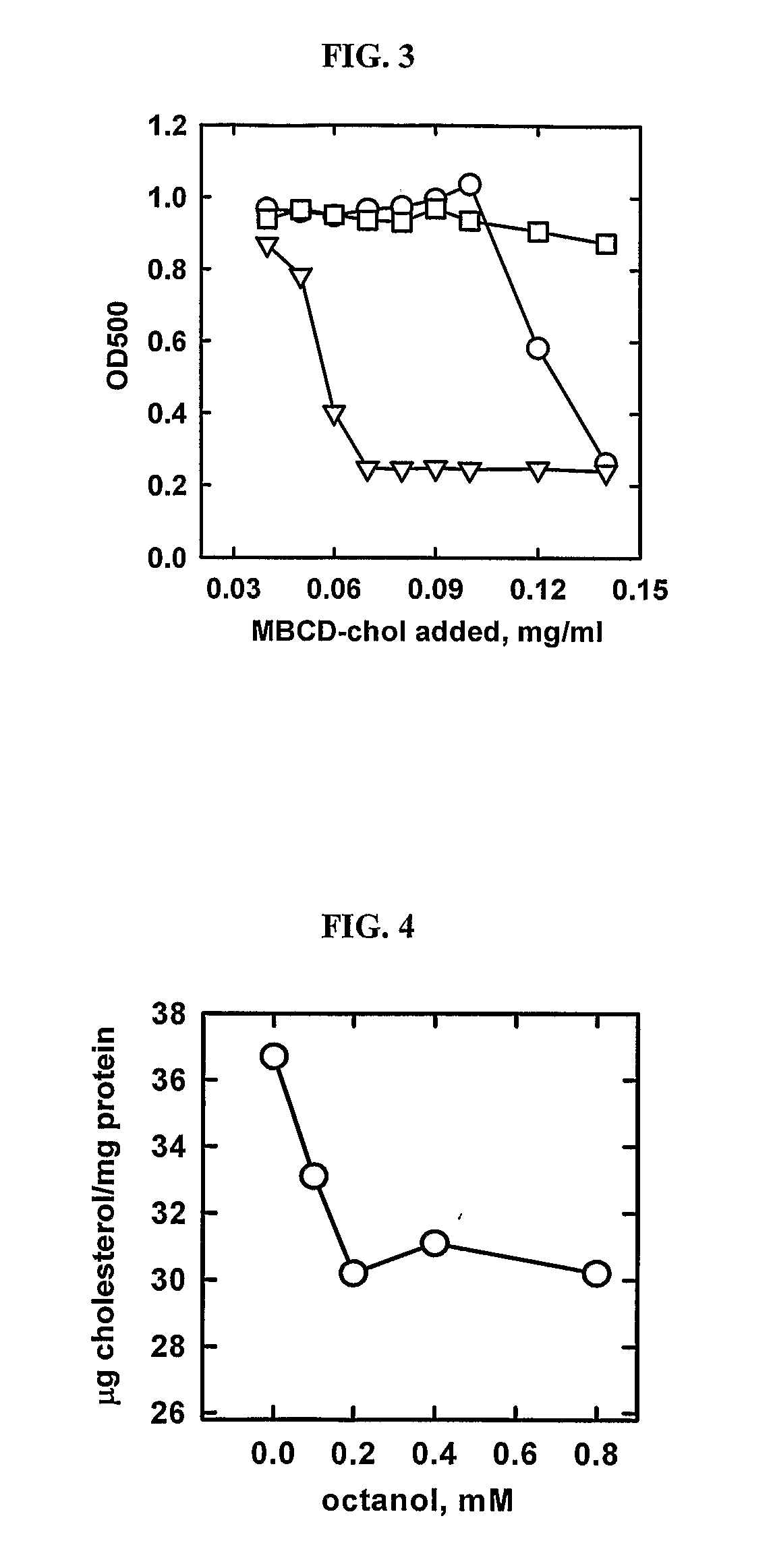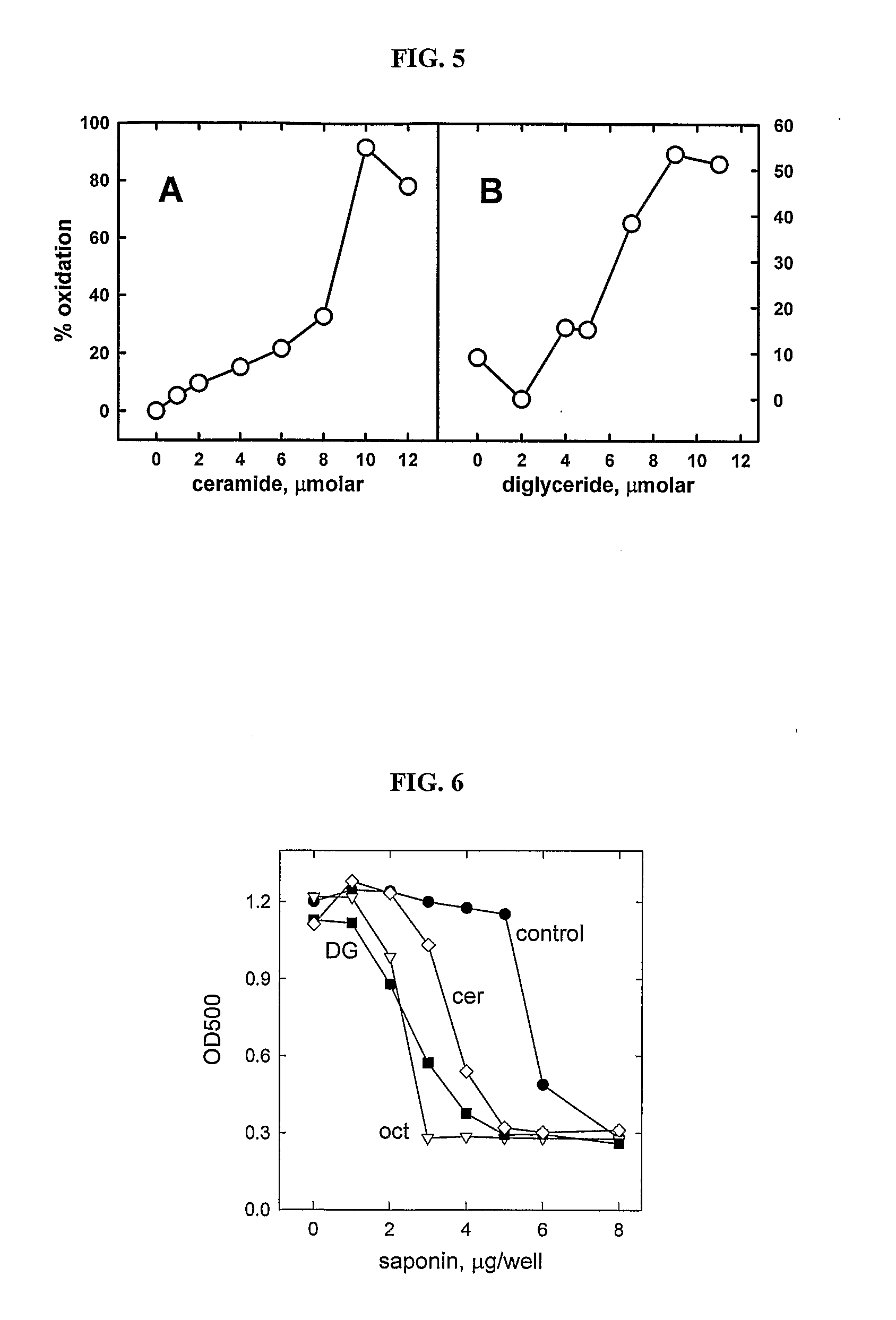Pharmacologic Method Of Lowering Cholesterol Production
- Summary
- Abstract
- Description
- Claims
- Application Information
AI Technical Summary
Benefits of technology
Problems solved by technology
Method used
Image
Examples
example 1
Screen Using Red Blood Cell Lysis by Amphotericin B
[0044] Human red cells (freshly drawn or from an outdated blood bank source) were washed and suspended in physiological buffer. The red cell's cholesterol content was lowered slightly (e.g., by 20%) with cyclodextrin (Steck et al., Biophys. J., 83, 2118-25, 2002) so that they would not be lysed by amphotericin B unless a favorable compound increased the activity of the cholesterol in their membrane. The cholesterol modified cells were placed in the wells of a microtiter plate and incubated for a few minutes at room temperature with octanol and lysophosphatidylcholine, which can be replaced with a battery of drugs (individually or in mixtures). Amphotericin B was then added and the plate incubated at room temperature for an hour. Cell lysis was scored by reading light scattering in a plate-reading photometer (FIG. 1) or, more simply, by letting the unlysed cells settle for an hour in conical wells and then assessing hemolysis by eye...
example 2
Screen Using Red Blood Cell Lysis with Cholesterol Oxidase
[0046] The procedure used in this Example were the same as those for Example 1, except that cholesterol oxidase was substituted for amphotericin B. This example demonstrates that cholesterol oxidase also reports on membrane cholesterol activity. As with amphotericin B, the cholesterol oxidase enzyme scarcely acts upon cholesterol below a threshold that lies near the physiological level but vigorously oxidizes cholesterol once that threshold is reached. Lange et al. Biochim Biophys Acta, 769, 551-62. The oxidation of red cell membrane cholesterol leads to lysis. Promising agents can therefore be readily detected in a multiwell screen similar to that described above in Example 1. The results of this experiment are illustrated in FIG. 3.
example 3
Screen Using Fibroblast Cell Lysis Detected with Cholesterol Oxidase
[0047] A human fibroblast cell line is grown in bulk culture and seeded into microtiter wells the day before experimentation. The fibroblast cells from the fibroblast cell line are rinsed and treated with octanol plus cholesterol oxidase as in Example 2. The increased level of plasma membrane cholesterol activity is detected in two ways. First, plasma membrane cholesterol activity is detected by susceptibility to cholesterol oxidase. Although cholesterol in human fibroblast is a poor substrate for cholesterol oxidase under standard conditions, it is readily oxidized when the plasma membrane cholesterol activity is increased; for example, by raising its concentration by 20-55% or by adding 0.1-1.0 mM octanol. Cell lysis caused by cholesterol oxidation can also be determined by measuring increased cell permeability using a plate fluorescence reader and the impermeable indicator of potassium ions, PBFI, or another ind...
PUM
| Property | Measurement | Unit |
|---|---|---|
| Concentration | aaaaa | aaaaa |
| Permeability | aaaaa | aaaaa |
| Therapeutic | aaaaa | aaaaa |
Abstract
Description
Claims
Application Information
 Login to View More
Login to View More - R&D Engineer
- R&D Manager
- IP Professional
- Industry Leading Data Capabilities
- Powerful AI technology
- Patent DNA Extraction
Browse by: Latest US Patents, China's latest patents, Technical Efficacy Thesaurus, Application Domain, Technology Topic, Popular Technical Reports.
© 2024 PatSnap. All rights reserved.Legal|Privacy policy|Modern Slavery Act Transparency Statement|Sitemap|About US| Contact US: help@patsnap.com










